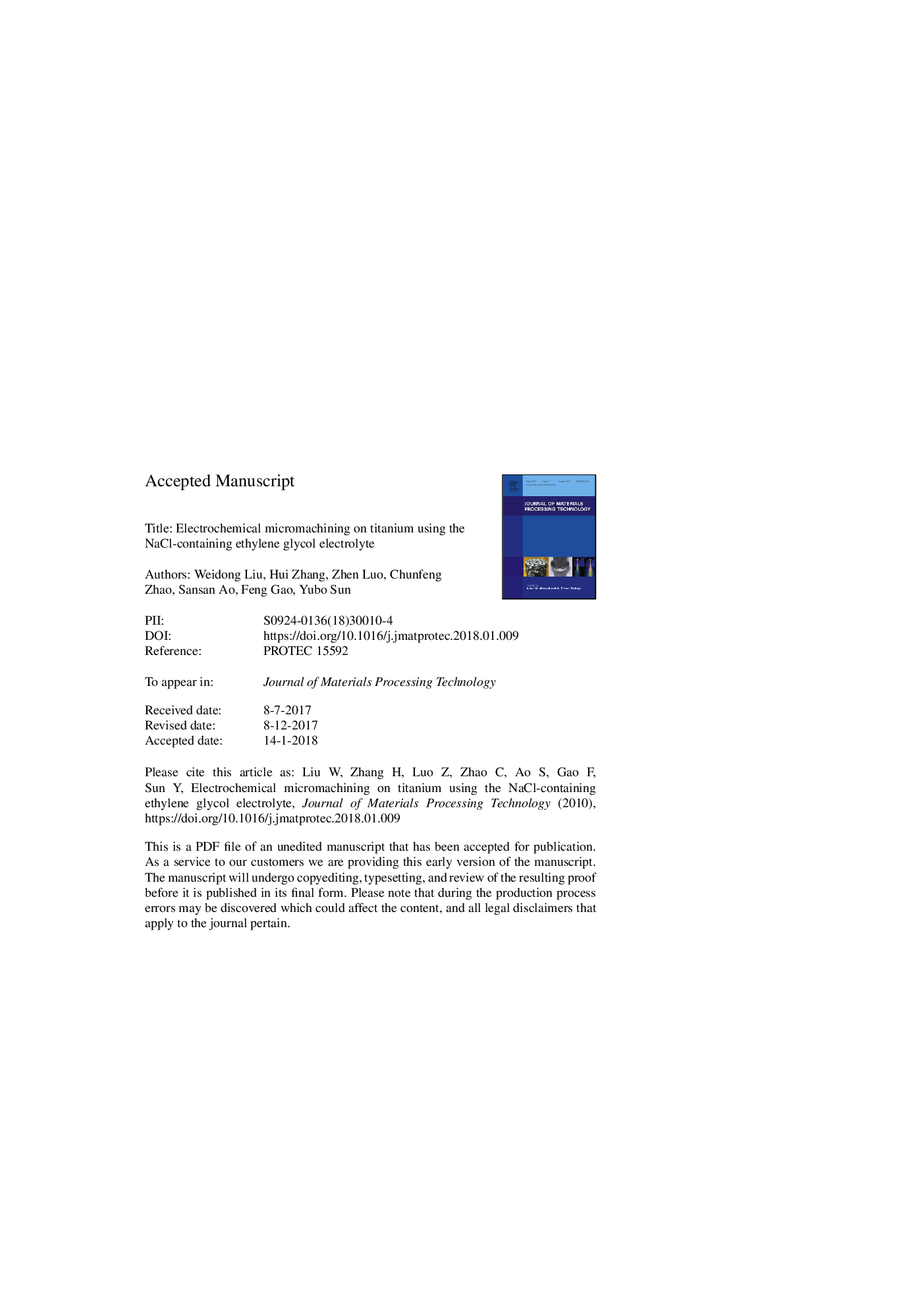| Article ID | Journal | Published Year | Pages | File Type |
|---|---|---|---|---|
| 7176494 | Journal of Materials Processing Technology | 2018 | 35 Pages |
Abstract
Titanium has been widely applied in industry owing to its excellent properties such as low density, high strength, and corrosion resistance. Compared with traditional mechanical methods, electrochemical micromachining (EMM) has some inherent advantages for the shaping of hard metallic materials; therefore, it is a promising method for the micromachining of titanium. However, the high corrosion resistance of titanium owing to its stable oxide film is a drawback during EMM. To overcome this limitation, a novel electrolyte, NaCl-containing ethylene glycol (EG) solution, was applied in this study. The polarization behavior of titanium in the NaCl water-based and ethylene-glycol-based solutions was comparatively analyzed. In contrast to that in the water-based solution, no oxide film was formed during anodization in the NaCl-containing EG solution. This characteristic could potentially improve the machining performance of the EMM of titanium. Subsequently, the effect of the main process parameters on the machining performance was investigated. Accordingly, peak voltage of 40â¯V, pulse width of 25â¯Î¼s, and feeding rate of 1â¯Î¼mâ¯sâ1 were selected as the optimum parameters. Using the optimum parameters, a high-quality microhole with 149.5â¯Î¼m average diameter, 300â¯Î¼m depth, and 7.6° taper angle was successfully EMM machined on titanium.
Related Topics
Physical Sciences and Engineering
Engineering
Industrial and Manufacturing Engineering
Authors
Weidong Liu, Hui Zhang, Zhen Luo, Chunfeng Zhao, Sansan Ao, Feng Gao, Yubo Sun,
